Four Things Design Thinking Can Teach Us About Philanthropy…and Life

By Rena Greifinger, Senior Lead, MaverickNext, PSI
The piece below originally appeared here on the Family Office Exchange blog.
Empathy. Child-like curiosity. Trust. Failure. These traits are what should guide the next evolution in philanthropy.
I think often about the future of the social sector, not just because it is what my current job entails, but because it has been my life-long professional path and purpose.
I’ve worked in non-profits my entire career—big ones, small ones, international ones and local ones. I’ve attended thousands of meetings and conferences, designed dozens of programs and strategies, and written countless grant applications. In these roles, I’ve felt completely fulfilled and totally inadequate. I’ve witnessed some of the most creative and efficient use of time and resources, as well as the complete waste of them. The non-profit sector is one of the most fantastic but frustrating spaces to work in, not least because there is this vast and unnecessary power differential between those funding and those implementing programs.
To solve the world’s toughest problems, we need to start breaking down the siloes that feed the imbalance of power between donors and implementers.
Over the last few years, as implementers of public health programs, my colleagues and I have used design thinking (also known as human-centered design) as an approach to creative problem-solving. Tim Brown, the CEO of design thinking firm IDEO, describes it as “a human-centered approach to innovation that draws from the designers’ toolkit to integrate the needs of people, the possibilities of technology, and the requirements for business success”. When done well, a design thinking process is invigorating and refreshing. It has helped us see the people we serve—our consumers—in better light, and has helped to unlock some of the latent creativity that lies within many large organizations.
Most importantly, it has pushed us to bring together unlikely teams of people that offer different perspectives, talents, energies and positions of power—working in a way that recognizes the value of those offerings equally. Design thinking has allowed us to work alongside our donors rather than separate from them, and has given us all a glimpse of how transformative this way of working can be.
Design thinking begins with a shift in mindset, and results in creative problem-solving. Here are just four simple, but powerful perspectives that design thinking has taught me, that I have not only found useful for achieving social impact, but for life overall.
Lead with empathy
Historically, social impact organizations have designed solutions for problems, rather than solutions for people. We go into the problem-solving process feeling convinced, rather than curious, which can hurt our chances of identifying the right solution.
When we design for people, we design with empathy. We immerse ourselves in their worlds, engage them in developing solutions, and ultimately seek to delight and inspire them. Through empathy, we learn to see the world as others see it, remain non-judgmental, and keep people – not problems – at the center of our mission. Brené Brown captures empathy best in this video on empathy vs. sympathy.
Think like a kid
Children are the reigning champions of imagination and curiosity. During childhood, we are at our most heightened state of exploration and discovery. We question everything without inhibition and live free of many social constraints.
Design thinking brings us back to an almost-childlike mindset; it allows us to harness our curiosity, to check our assumptions, and build upon wild ideas rather than dismissing them before they have been fully developed.
Design thinking allows for terrible ideas and for lots of humor. It inspires us to unleash creativity, and not take ourselves too seriously in the process. My colleague Manya Dotson puts it well in her blog post on human-centered design (HCD), “HCD inspires action in ways that PowerPoints, manuscripts and reports may not.” For more on the power of thinking like a child, check out this podcast from Freakonomics.
Trust yourself
We are all born with incredible imaginations. Imaginations that conjure up the most ridiculous questions, tell elaborate stories, and create invisible friends. And then we grow up and we diagnose ourselves, or let others diagnose us, as creative or uncreative.
Design thinking posits that there are techniques we can use to unlock the creativity within us all. In their book Creative Confidence, brothers and IDEO founders Tom and David Kelley talk about how design thinking helps people rediscover their creative confidence – by helping them get past four fears that hold most of us back – fear of the messy unknown, fear of being judged, fear of the first step, and fear of losing control. In this article they talk about how to reclaim your creative confidence.
Embrace failure
Most of us have never been taught to fail. Our society expects us to achieve in all areas – looks, love, work, fitness, parenting, cooking, even protesting. The omnipresence of social media can make us feel like everyone else is living a life of glamour.
Design thinking is not just another disingenuous promise that failure is important for learning; it actually requires it.
Creativity is born out of terrible ideas. Prototyping, a key component of design thinking, allows us to test all kinds of harebrained concepts with consumers, with the full expectation that most will fail. It’s time to not only accept failure as part of problem-solving, but hope for it! Check out this great clip of Tom Chi on the Google glasses prototype.
The problems we are trying to solve in the world are big, complicated, and messy; but the consequences of not solving them are tragic. It will take far more than four tips to achieve change, but by starting to harness the elements of design thinking, we can lay the foundation for a future of success for the social sector. The result will be exponentially impactful for all of us, regardless of whether we are giving, spending, or benefiting from the money
